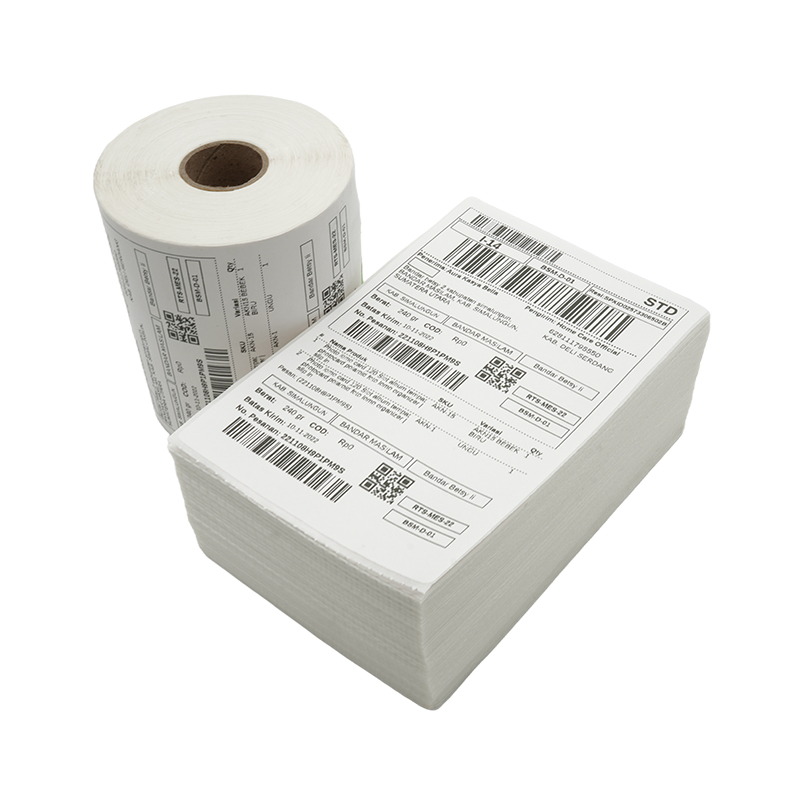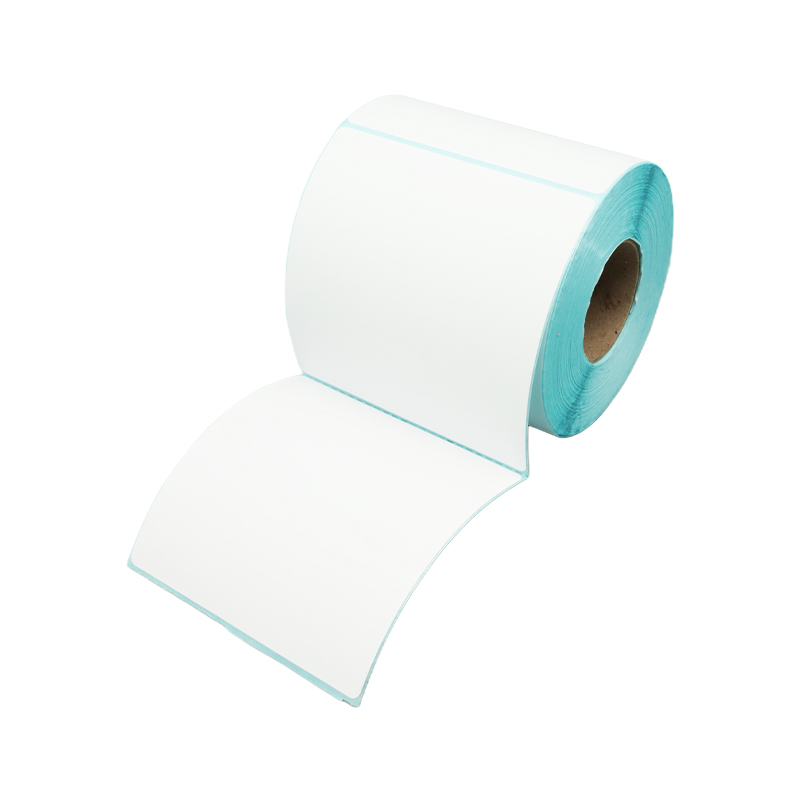How does blue grid thermal tag paper achieve its stable and durable temperature characteristics?
Release Time : 2025-11-12
In modern logistics, warehousing management, medical cold chain, and even the retail industry, labels are no longer simply information carriers, but a key component of intelligent management. Blue grid thermal tag paper, with its unique design and superior performance, is gradually becoming a favorite across many industries. Despite its compact size, it plays a significant role in practical applications, especially in temperature-sensitive scenarios, where its stable temperature display, clear printing, and high durability are particularly prominent.
1. Unique Design, Enhanced Recognition Efficiency
The most distinctive feature of blue grid thermal tag paper is its surface printed with regular blue grid lines. This design is not merely aesthetically pleasing, but also practically sound. During automated labeling or scanning, the grid lines serve as a visual positioning aid, helping equipment accurately identify label boundaries, thereby improving labeling accuracy and reading efficiency. Especially on high-speed sorting lines, even tiny labels can be quickly captured by the system, reducing misreading or missed readings. Furthermore, the blue background effectively highlights the black text or barcodes printed on the thermal surface, enhancing contrast and making the information more eye-catching and legible.
2. Thermal Technology, More Environmentally Friendly Without Ribbons
Unlike traditional labels that require ribbons, thermal label paper develops color simply by heating the thermal printhead, eliminating the hassle of replacing consumables and reducing operating costs. Blue Grid thermal tag paper uses a high-quality thermal coating, resulting in not only rapid printing response but also clear and sharp images, maintaining good readability even on low-resolution printing equipment. More importantly, these labels are free of harmful substances such as BPA, meeting environmental and health standards, making them suitable for fields with high safety requirements, such as food and pharmaceuticals.
"Stable temperature development" is a core advantage of Blue Grid thermal tag paper. Temperature development refers to the critical point at which thermal materials begin to develop color. High-quality thermal paper has its temperature development range precisely controlled, ensuring stable color development at normal printing temperatures while preventing premature discoloration or fading due to ambient temperature fluctuations. For example, in high-temperature warehouses during summer or during low-temperature transportation in winter, the labels remain clearly legible and will not "self-destruct" due to temperature differences.
4. Durable and Long-Term Traceability:
While thermal paper is often considered prone to fading, modern technology has significantly improved its durability. Blue grid thermal tag paper typically undergoes UV-resistant, antioxidant, and moisture-proof treatments, allowing it to be stored for 6 months to 2 years under normal indoor conditions, with some high-end products supporting even longer information retention. For logistics packages, medical devices, or laboratory samples requiring mid-term traceability, this durability fully meets business needs. With lamination or a special protective coating, its lifespan can be further extended.
5. Wide Range of Applications, Supporting Industry Digitalization:
From e-commerce express delivery slips to hospital test tube labels, from fresh food cold chain temperature control records to electronic component batch management, blue grid thermal tag paper is ubiquitous. Its standardized size is compatible with mainstream label printers, facilitating integration into various information systems. In today's booming smart warehousing and IoT era, these tags are not only the "skin" of information but also the "nerve endings" of data flow, providing fundamental support for end-to-end visualization and intelligent decision-making.
While seemingly ordinary, blue grid thermal tag paper embodies technology and craftsmanship in its details. With its stable temperature performance, clear printing results, environmentally friendly material selection, and wide applicability, it has become an indispensable part of modern supply chain and information management.
1. Unique Design, Enhanced Recognition Efficiency
The most distinctive feature of blue grid thermal tag paper is its surface printed with regular blue grid lines. This design is not merely aesthetically pleasing, but also practically sound. During automated labeling or scanning, the grid lines serve as a visual positioning aid, helping equipment accurately identify label boundaries, thereby improving labeling accuracy and reading efficiency. Especially on high-speed sorting lines, even tiny labels can be quickly captured by the system, reducing misreading or missed readings. Furthermore, the blue background effectively highlights the black text or barcodes printed on the thermal surface, enhancing contrast and making the information more eye-catching and legible.
2. Thermal Technology, More Environmentally Friendly Without Ribbons
Unlike traditional labels that require ribbons, thermal label paper develops color simply by heating the thermal printhead, eliminating the hassle of replacing consumables and reducing operating costs. Blue Grid thermal tag paper uses a high-quality thermal coating, resulting in not only rapid printing response but also clear and sharp images, maintaining good readability even on low-resolution printing equipment. More importantly, these labels are free of harmful substances such as BPA, meeting environmental and health standards, making them suitable for fields with high safety requirements, such as food and pharmaceuticals.
3. Stable Temperature Development, Adaptable to Complex Environments
"Stable temperature development" is a core advantage of Blue Grid thermal tag paper. Temperature development refers to the critical point at which thermal materials begin to develop color. High-quality thermal paper has its temperature development range precisely controlled, ensuring stable color development at normal printing temperatures while preventing premature discoloration or fading due to ambient temperature fluctuations. For example, in high-temperature warehouses during summer or during low-temperature transportation in winter, the labels remain clearly legible and will not "self-destruct" due to temperature differences.
4. Durable and Long-Term Traceability:
While thermal paper is often considered prone to fading, modern technology has significantly improved its durability. Blue grid thermal tag paper typically undergoes UV-resistant, antioxidant, and moisture-proof treatments, allowing it to be stored for 6 months to 2 years under normal indoor conditions, with some high-end products supporting even longer information retention. For logistics packages, medical devices, or laboratory samples requiring mid-term traceability, this durability fully meets business needs. With lamination or a special protective coating, its lifespan can be further extended.
5. Wide Range of Applications, Supporting Industry Digitalization:
From e-commerce express delivery slips to hospital test tube labels, from fresh food cold chain temperature control records to electronic component batch management, blue grid thermal tag paper is ubiquitous. Its standardized size is compatible with mainstream label printers, facilitating integration into various information systems. In today's booming smart warehousing and IoT era, these tags are not only the "skin" of information but also the "nerve endings" of data flow, providing fundamental support for end-to-end visualization and intelligent decision-making.
While seemingly ordinary, blue grid thermal tag paper embodies technology and craftsmanship in its details. With its stable temperature performance, clear printing results, environmentally friendly material selection, and wide applicability, it has become an indispensable part of modern supply chain and information management.







